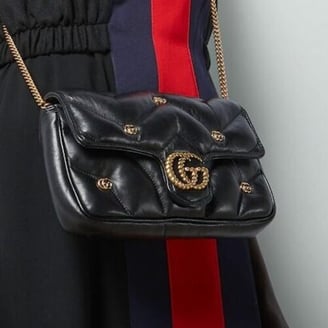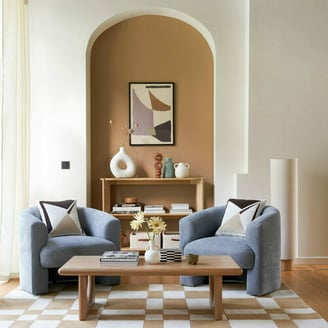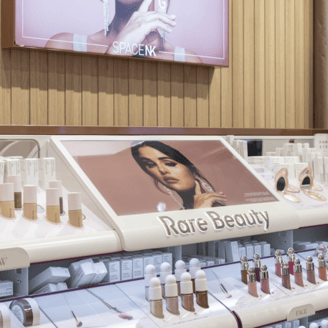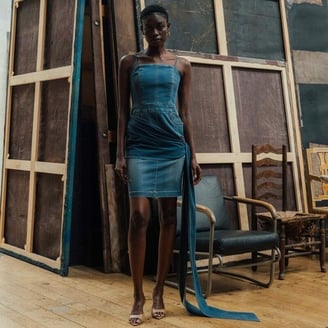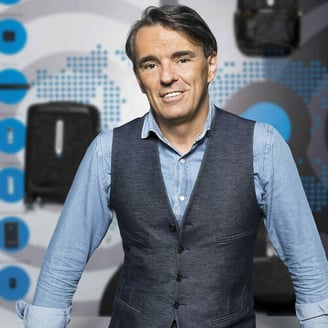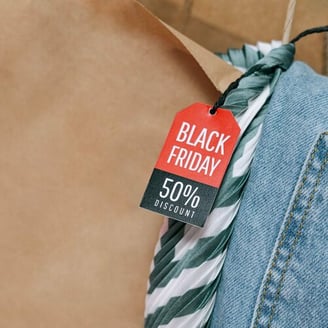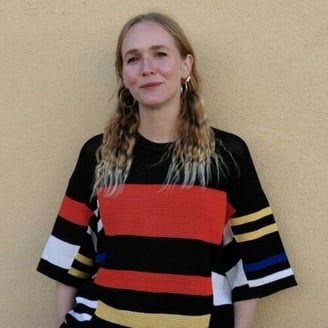Esprit CEO William Pak on his strategy to rebuild the brand and conquer the United States
Putting an end to a ten years free-fall, over two years ago William Pak set himself the goal of reviving the former fashion world champion. The executive spent years working as a corporate lawyer, supporting investments in sectors as diverse as mining and technology. Initially acting as a consultant in an interim management role, he finally took on the role of CEO at Esprit in early 2022 as part of a family project, with his wife Su Yi Chiu as the brand's Chairman of the Board. Visiting the French capital during Paris Fashion Week, the CEO took advantage of his short stay to scout out his future flagship in the Marais and sat down with FashionNetwork.com to detail his roadmap.
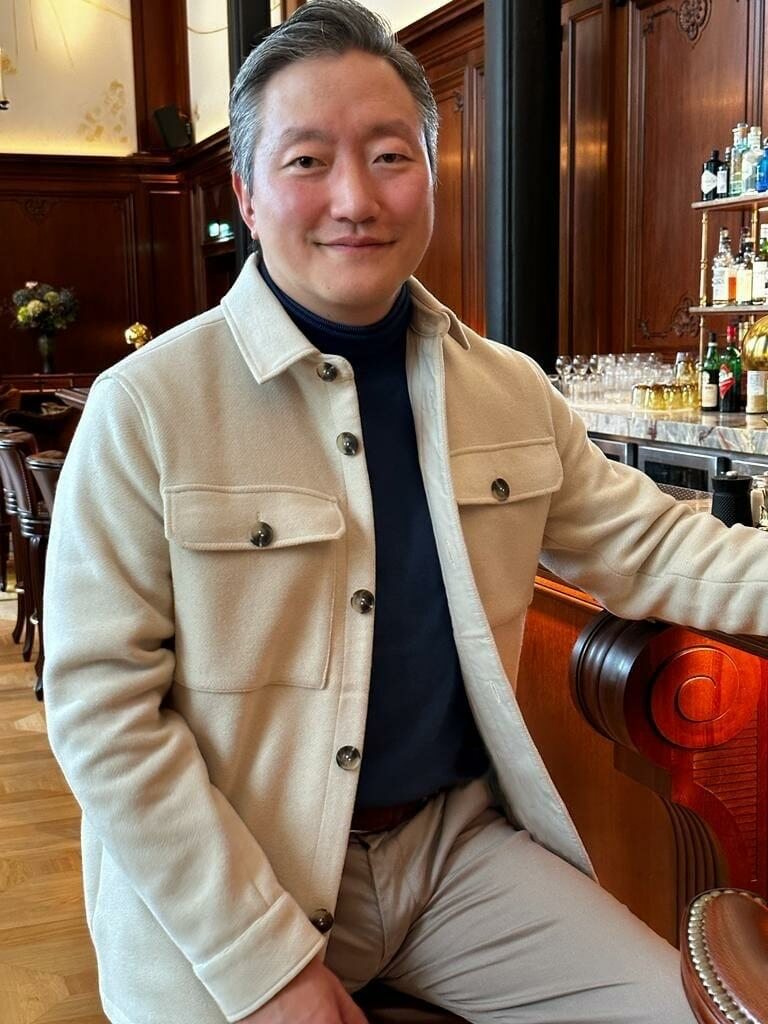
Founded in 1968 by Douglas Tompkins and Susie Tompkins Buell (who went on to create The North Face), Esprit, the Californian lifestyle brand continued to grow until the 1980s. It opened in Hong Kong in 1971 and in Germany in 1976. "There were three regions, three different owners, with different strategies. For a long time, they worked well together. But in 1989, when the American company was at its peak, there was a family dispute. From then on, the company changed owners several times, until the United States closed its doors in 1996," he explains.
To get an idea of what the company has been through over the last thirty years, the executive was keen to meet several former Esprit managers, to find out about the company's turning points. And for William Pak, transfering the headquarters to Germany was when things went south. "Esprit offered very high quality clothing, a joyful lifestyle and had a very avant-garde approach. But around 2000, it moved to a small town in southern Germany. At the time, the property market was exploding... and they started signing leases for 30 to 100 years, most of which were for 2,000 to 3,000 square-metres."
Despite the plans to close shops in the German market over the last decade, the manager admits that he is still faced with a large number of long-term leases. "In the end, it was the wrong place, the wrong size, the wrong strategy. At the same time, they wanted to keep pace with fast fashion, with twelve collections a year. Clearly, this was not the best thing for the brand."

With this in mind, Esprit's executive committee has been working for the past 12 months to reposition the brand. The CEO explains that he has reduced the number of suppliers from 250 factories to 34, and has also switched to a four-season offering, with global consistency.
"The identity had been lost. We had to do a very thorough rebranding. This represents a year of planning, strategy and relationship building, and this autumn is the first time the brand's marketing has been aligned globally. In terms of style, the idea is to have an elegant urban look with a strategy built around three heritage pillars: Esprit is playful, modern and cool. We are building this proposition with a pyramid offering, with Hero products at the very top of the collection."
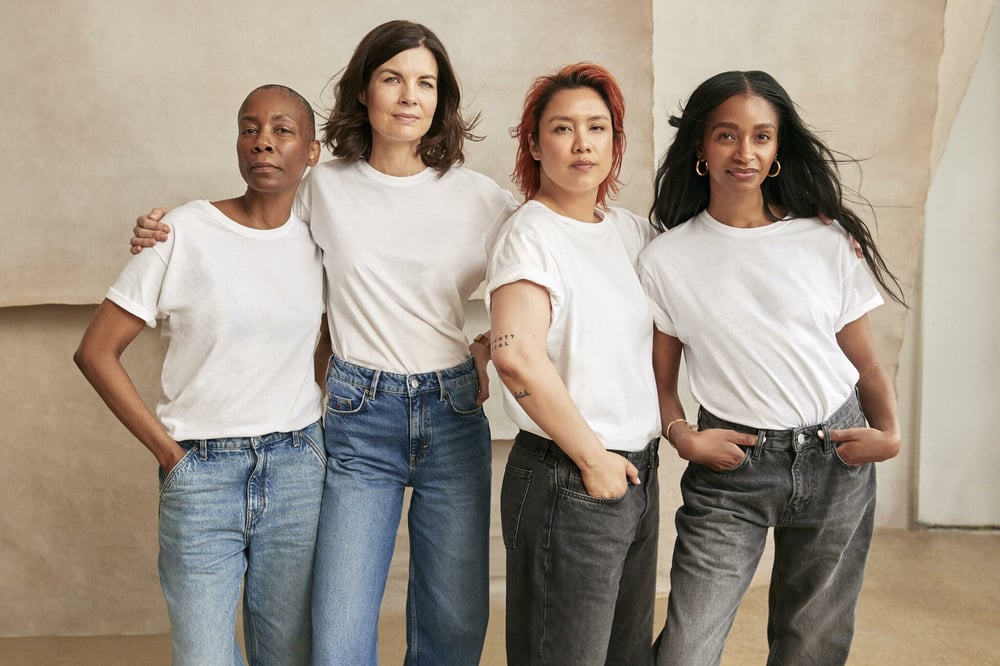
While the brand is repositioning itself, it will still be offering a range of basics and more affordable products. For example, currently on its website, a cashmere poncho for 399 euros is displayed alongside retro denim jeans for 79 euros, a dress for 59 euros and a long-sleeved cotton top for 25 euros.
Eight key elements for the offer
On the product side, the style team has defined eight key signature elements to underpin the new brand story: a parka, a loose suit, a shirt, products bearing the brand's logo, the tote-bag, a wrap dress, a denim collection launched during the summer and lightweight skirts. Eight elements that will accompany Esprit over several seasons. The power of the brand and its lifestyle positioning from the 1980s seemed to fascinate Pak... as did the downfall associated with German management. Therefore he is reviving the brand in the United States.
While financial and logistics operations are still based in Hong Kong, the new boss has decided to create a new dynamic around the various departments. He has set up a design and technology development centre in New York, where around a hundred people work. Relying heavily on Esprit's Californian roots and on denim, the CEO has also decided to create a denim innovation centre in Amsterdam. "The idea was to create a dedicated team, to have experts who have relationships with the best factories and who know all the processes. Before, it was the same team based in Germany that produced the entire ready-to-wear collection."
A strategy with an American accent
Even so, Germany still accounts for half of Esprit's business and is home to many of the company's employees. Across Europe, the brand boasts 160 branches and 420 franchisees, as well as in-store corners. To develop its new approach, management requires time on the Old Continent.
"Germany is a historic market, but we are in the process of diversifying that," says Pak, who intends to build his comeback through the American market. "Our omnichannel strategy is based on flagships. We will have a flagship shop in New York next year, and we already had an ephemeral space in New York in SoHo. But we also have regional shops in Los Angeles and Chicago, which have already opened, and Miami and Vancouver, which are due to open by the end of the year. Early next year we should have five shops in the United States. Our aim is to have two shops in these cities by the end of next year in order to achieve economies of scale. We could have around fifteen shops, then 25 the following year. If we're present in the United States with around thirty shops, that's a good way of building up the recovery. Then there's the halo effect. We will have specific marketing in these key cities. This will help our local retailers, but also e-commerce, and will reinforce the brand image. That's what we're going to do next in Asia, where we already have a presence in various markets in cities like Singapore and Hong Kong, but also in South Korea and Japan, as well as in key cities in Europe."
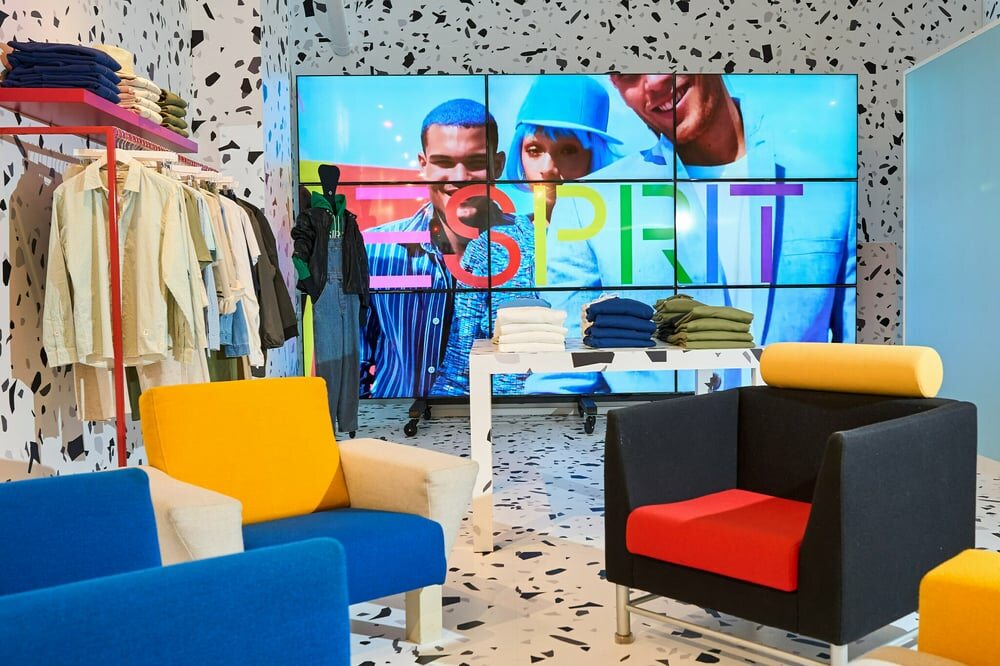
But what about the store network, particularly in Germany? Following the example of its Dusseldorf shop, where one level has been closed in order to focus on the offer on the ground floor, the brand is going to reduce its surface areas or even relocate them. This operation should be carried out at around thirty sites over the next few months. On the other hand, major European cities are set to benefit from 350-square-metre flagships in premium locations, such as the Marais in Paris.
This Parisian flagship could open its doors in early 2024. At the same time, Esprit's teams want to convince Europe's leading department stores to invest in the brand and its upmarket positioning. These include Selfridges and El Corte Ingles, as well as Illum in Copenhagen, where the brand will be setting up a 200-square-metre space in November.
Marketing investment must go hand in hand with this change of image. "We are moving forward with regional approaches to elevate the brand. We are reallocating budgets and our strategy is geared towards full price with a focus on key cities." All of this is targeting an urban Generation X consumer. The brand has set up a dedicated digital and social media team to reach out to them.
And yet, despite the changes announced since the arrival of the new team, Esprit is still in a downtrend. The company, which has been listed on the Hong Kong stock exchange since 1993, has published its results. In the first half of the year, its sales were less than 400 million euros, with a negative result. Esprit has been in a downward spiral for almost 15 years. Ten years ago, it had sales of more than three billion euros, but has made losses in every financial year since.
Restoring the brand's backbone
"The brand has been in decline since the 2008 crisis," analyses Pak. "There were a lot of people, no strategy and no history. We've spent a lot of time over the last few months rebuilding its identity. Rather than do the same thing again, we decided to change the brand. But that takes time, money and sweat. And there are no immediate results. In general, shareholders want quick results. But a renaissance takes time because you have to clean up, invest and then grow. My job is not just to motivate the staff, which was an important step, but also the shareholders and management, and the media. Our advantage is that we have long-term capital. This is what makes us different from many other brands that are trying to restructure."
While the CEO does not go into detail about the amounts invested, he is clear about the fundamentals that his executive committee is in the process of building. Logistics and data management are at the top of the expenditure list. The company is modernising its infrastructure by implementing SAP solutions to better manage stocks, pricing and lead times. But it has also overhauled its e-commerce site, not only in terms of user-friendliness but also to optimise its functionalities, and as a result it has had to recruit profiles in these areas... which again represents substantial investment in people. All this is becoming the backbone of the project's longevity, according to the director.

"I think it takes several quarters to identify the real need and a few more quarters to implement solutions. It takes at least nine months for these elements to be put in place and for us to benefit from these optimisations. We've gone back to the drawing board. Initial feedback from the United States has been positive. And that's where we'll see the first results," says Pak, who is optimistic that inflation will moderate and consumer spending will pick up in 2024. "I think we're in a better position now because we have a new strategy that's different from the others. If everything goes according to plan, we'll know by the middle of next year how far we've come. Until then, my role is to be chief motivator and chief enabler. The project and the motivation are there. All that remains is to validate the ambitious move upmarket."
Copyright © 2023 FashionNetwork.com All rights reserved.




